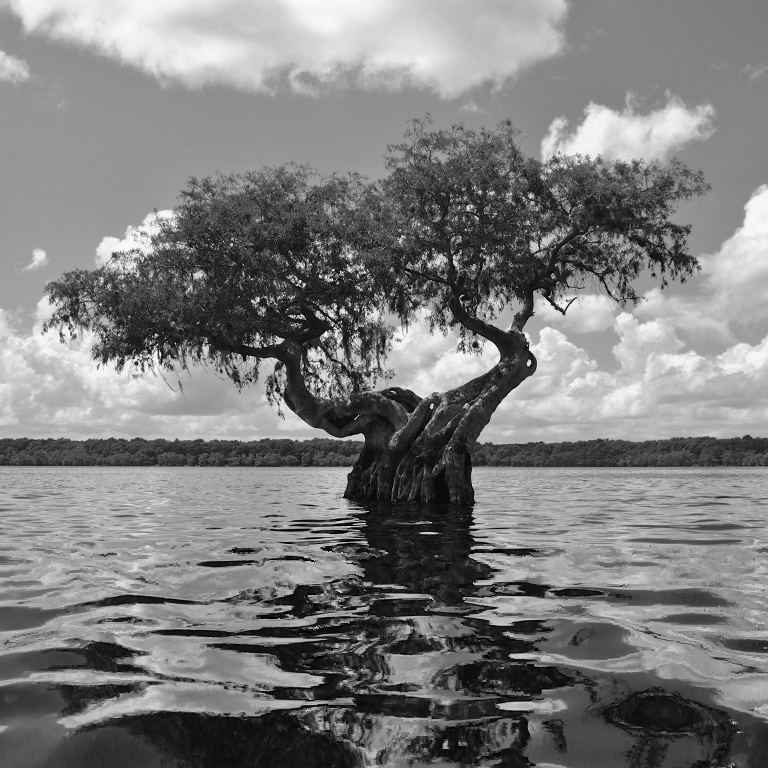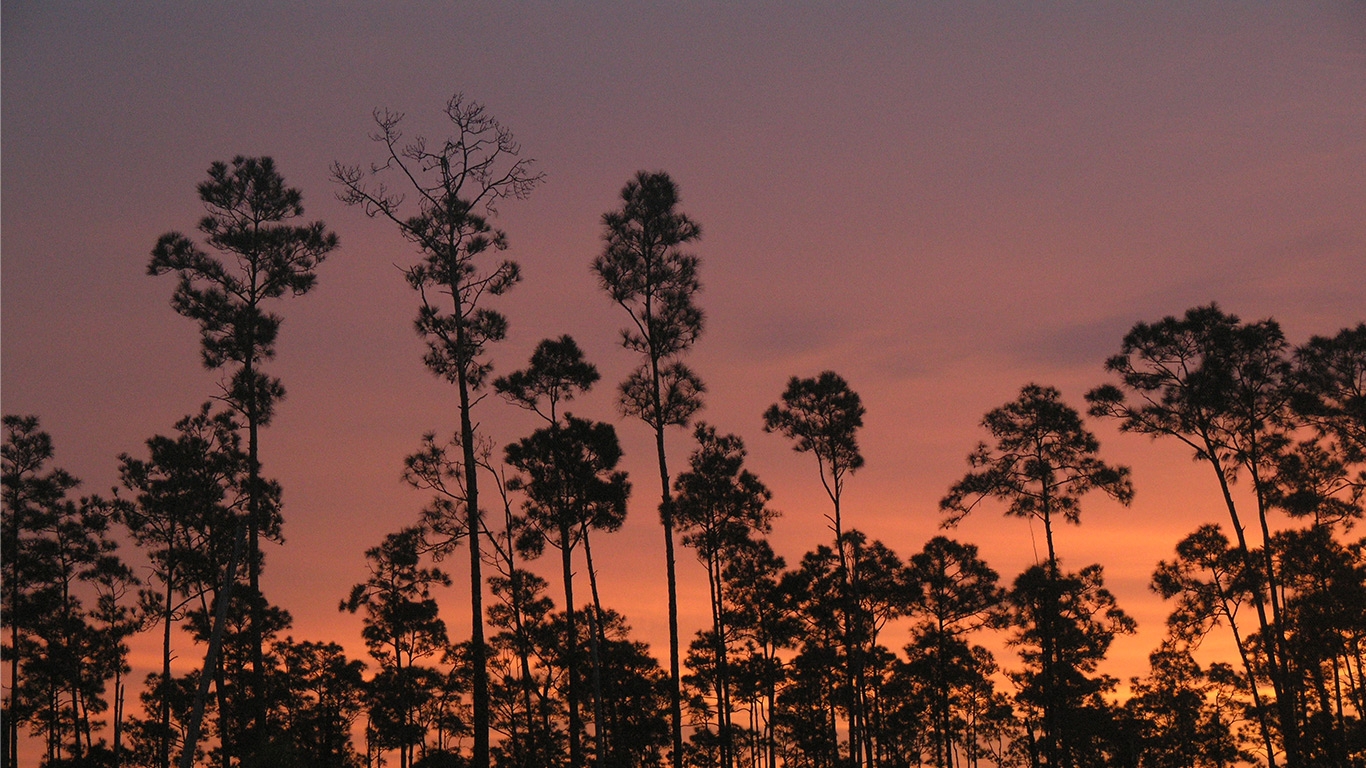The state's immense biodiversity and its benefits for bonsai
Florida holds more natural diversity within its landmass than any other state in the country. States with similar latitude are dry, desert environments, while the Florida landscape ranges from temperate, sub-tropical, and tropical regions. For bonsai enthusiasts that means you have over half the native tree species in the United States at your fingertips. As an added bonus, the physical appearance of species depend on where they occur regionally, in turn providing artists with an arsenal of creative influence. With bonsai largely designed to mimic trees in nature, Floridians are able to learn in one of the most universally awesome places to practice the art.
In Florida, geography determines the framework of trees. Just one inch in elevation change can cause varying shapes and sizes within species. This is due to the nearly three hundred types of soil found in Florida. Of those, three individual groups can be identified: sand, stone, and clay substrates (or fine sands). These soils have a massive impact on differing species access to water and nutritional needs, as well as the tree’s ability to secure its foundation.

"In Florida, geography determines the framework of trees. Just one inch in elevation change can cause varying shapes and sizes within species."
For instance, trees in more upland areas with sandy bottoms tend to form few surface roots due to loose or well-draining soil. In areas with greater or permanent water retention and acidity, such as silt or muck, roots grow predominately along the ground surface. The trees found here have wide, fluted bases due to poor oxygen within the soil or the presence of a hardpan beneath. A similar reaction occurs in bonsai as a result of shallow containers. As bonsai mature, their trunks appear to melt as their bases expand laterally mirroring trees from harsh soil conditions in nature.
In conjunction with soil variation, the presence of water or lapses between hydroperiods contributes to the compounding diversity among Florida trees. Since Florida has water on three sides, annual rainfall can exceed sixty inches. The amount of water captured by the land via lakes, wetlands, or seepage and the humidity produced, regulate temperature fluctuations across the state. As a result, nearly 3000 species of trees and shrubs are able to thrive because they are unlikely to experience consistent freezing or arid heat.
As you travel from north to south, you’re able to observe how Florida’s land and weather dictate the native species that exist there. Each region tells a different story through individual species and offers bonsai enthusiasts’ guidance as they interpret trees artistically. Since there are no “typical trees” in the Florida environment, you’ll find impressions across the state to be just as diverse as the regions in which they’re found. It is these differences that make Florida difficult to overlook.

Skirting the emerald waters and white sandy beaches of the northern panhandle, there reside some of Florida’s most unique species. The trees found here lean angular towards land as winds along these coasts carry salt spray onshore, pruning away their seaward buds. A common design in bonsai culture, this windswept style framework does not oppose the impending wind but flows along it.
With each branch moving in unison, sand pines- Pinus clausa and sand live oaks -Quercus geminata emerge seamlessly from dunes as they rise with the landscape. Thanks to root adaptations, these coastal specimens are able to lean and bend at angles less than 45 degrees in pure sand. Instead of the traditional taproot, their roots expand laterally connecting to one another like interlocking fingers. This phenomenon provides each tree with unwavering stability and maximizes nutritional uptake in soils where high leaching occurs.
Moving inland across the panhandle, short wind sculpted trees give way to lofty 300-year old longleaf pines Pinus palustris. Their massive trunks with drooping branches and burdened crowns tower over acres of wiregrass and wildflowers. With architecture similar to formal upright bonsai, the domineering statures of these conifers go unchallenged within their upland zones. However, as the pine flatwoods rescind into north Florida’s river floodplains and swamps, one of the most iconic southern species reigns supreme.


"Timeworn bald cypress sit atop mirrored reflections as they protrude from still waters. Like badges of honor, each scar and broken branch represent the storms they have faced with each passing year."
Timeworn bald cypress - Taxodium distichum sit atop mirrored reflections as they protrude from still waters. Like badges of honor, each scar and broken branch represent the storms they have faced with each passing year. Bonsai artists go crazy for their naturally wide and fluted bases, especially specimen with adventitious roots or knees. The wide distribution of cypress and the vast elements impacting their growth attribute to the broad representations we see in bonsai. Often imagined to have flattop apexes that clash with an invisible ceiling, this species more commonly grows long shadowing branches with crowns of near uniformity.
Further east, across the central peninsula, old growth forests open up to vast cattle ranches and fountains of turquoise colored spring water. Southern live oaks - Quercus virginiana dot the open prairie with their long ornate branches often reaching out to touch the ground before returning to the sky again. Though not commonly used as bonsai material, the live oaks’ natural framework influences a variety of species used in bonsai such as ilex and boxwood. Their short trunks and broad canopies can easily be identified as they exhibit graceful maturity at any age or size.

Scattered throughout the central prairies, hardwood hammocks huddle around limestone depressions and beautiful freshwater springs. Referred to as karst topography, these zones occur where acidic plant litter and surface water percolate downward eroding the limestone floor. In areas that resist collapse from this erosion, the remaining vegetative particles accumulate forming a peat surface layer. As a result, trees growing within these zones are anything but typical due to the ever-shifting acidic environment.
Sugarberry- Celtis laevigata, red maple - Acer rubrum, and American hornbeam Carpinus caroliniana are a few of the species thriving within Florida hammocks. Similar to trees in wetland areas, the flowering hardwoods residing here have large fluted bases and creeping surface roots from poor soils. In addition, overcrowding causes their trunk and branch structures to grow wild and irregular, making them great resources for visual bonsai design and collection. Without many native conifers suitable for bonsai, these deciduous Florida natives are the primary contrast to the tropical species of the south.

In South Florida where palmetto scrubs and expansive marshlands meet sun scorched beaches, diversity among species decline. Here, seasonal temperature changes result from rainfall variations following summer and fall storms. Temperate and sub tropical hardwoods practically disappear as conditions become better suited for salt tolerant evergreen species. Nonetheless, trees native to this environment express beautiful character against the backdrop of an often-harsh landscape.
Indulgent of these conditions, slash pines - Pinus elliotii soar high above south Florida’s level farmlands and dry scrub environments. With their elegant simplicity and contorted framework this species bares a striking resemblance to the “less is more” bunjin and literati styles of bonsai culture. Their cantilever style branches slope and twist with age as limbs along the trunk fall away leaving behind heavy and deformed apexes. These native slash pine not only mirror long established bonsai designs, they give local artists an opportunity to see what made these designs so meaningful in the first place.
Past the scrublands of south Florida, slow growing pines are replaced with fast growing tropical trees. Species like the native strangler fig- Ficus aurea flourish in the constant heat and humidity of these coastal regions. The only ficus native to the sunshine state, strangler figs represent one of the most popular species used in bonsai. They’re known for their cloud like canopies with aerial roots that rain down, becoming smaller trunks of their own as they lock on to everything in their path. Bonsai artists commonly display the species having multiple trunks or prop roots as well as growing over a variety of objects.


"Native trees long overlooked for their odd nature are now celebrated for their complex and unique architecture."
The southern tip is one of the harshest, nutrient and oxygen starved regions of Florida. Vegetation along these coasts must tolerate loose foundations and yearly beatings from tropical storms and shifting seas. Endemic to this part of Florida, the buttonwood tree - Conocarpus erectus beautifully twists and turns over and around itself as it fluently absorbs each difficulty with grace. Their sun-bleached deadwood and elaborate branch structure compare only to the snow and wind scorned junipers of the western United States. Highly prized amongst the bonsai community, the buttonwood species rugged texture and centuries old character set it apart from traditional tropical species.
As seen from the northern panhandle to the southern tip, Florida’s diverse landscape is nothing short of awesome. Trees bend and crawl as they adapt to the elements impacting their ability to survive. Though there are species that cannot circulate between north and south regions, most areas of the state are able to enjoy both temperate and tropical species with little temperature disruption year round.
Native trees long overlooked for their odd nature are now celebrated for their complex and unique architecture. Artists are looking at new species to collect and advancing new naturalized species as representations of their local environments. With bonsai interest across the United States shifting from traditional styles to designs from the American landscape, states like Florida are becoming more relevant than ever. Because of this, Florida is gaining international recognition for its commitment to push the envelope and helping advance interest in North American species. Proving the ultimate point, understanding how species evolve and their relationship to bonsai can only lead to a greater appreciation of the art form.

